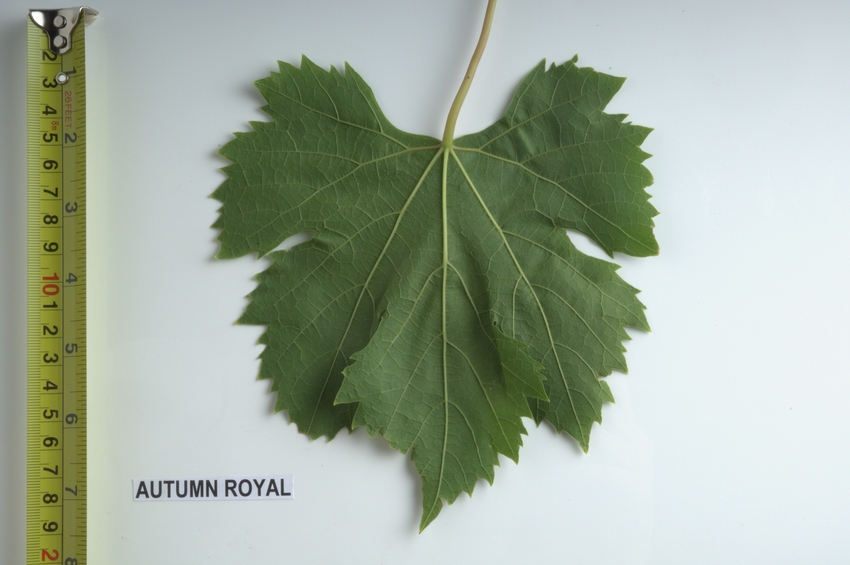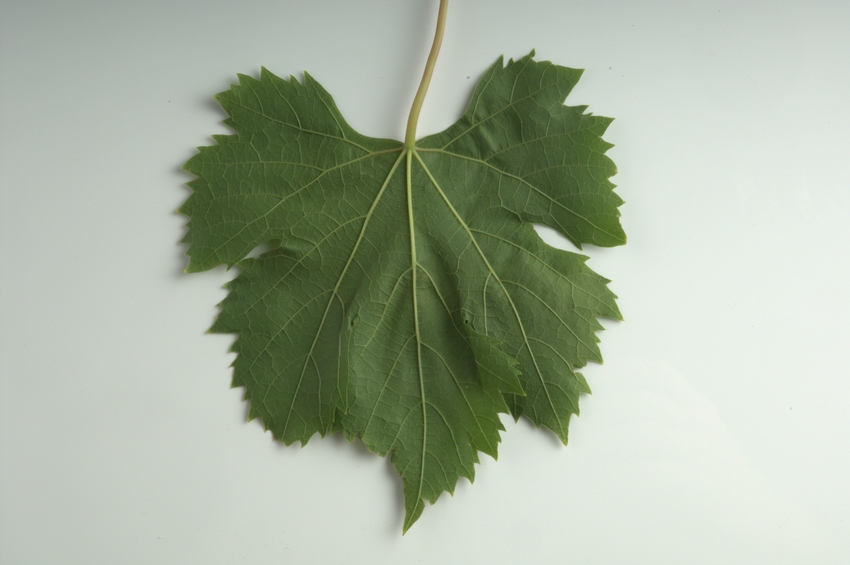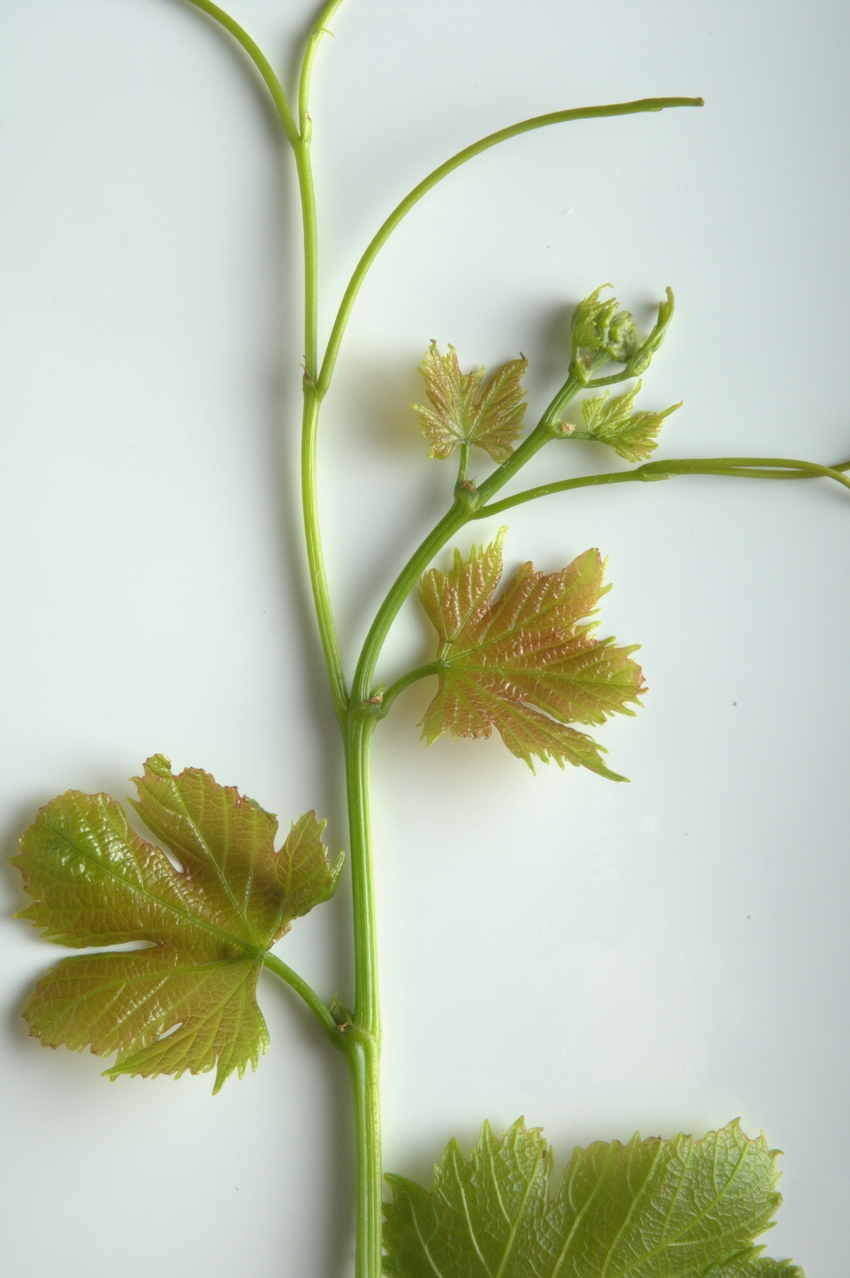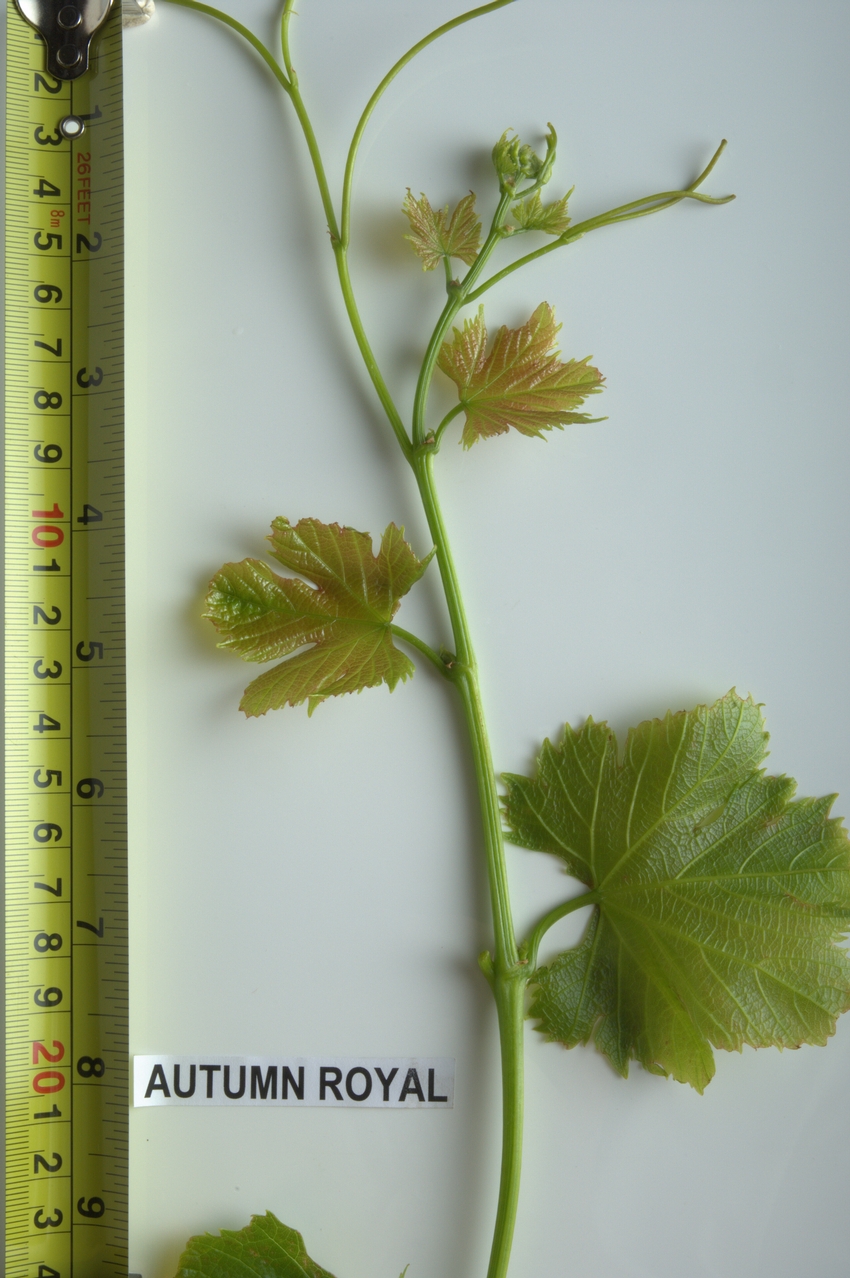Grape Variety: Autumn Royal
| Variety Name |
Autumn Royal |
| All Synonyms |
A 97-68 |
| Countries of Origin |
USA |
| Species |
Vitis vinifera
|
| Breeder |
Ramming and Tarailo |
| Institution |
USDA ARS Hort. Crops Research Lab (Parlier, CA) |
| Year Released |
1996 |
| Pedigree |
Autumn Black x C74-1 |
| References |
- The Brooks and Olmo Register of Fruit & Nut Varieties. Third Edition. 1997. ASHS Press, Alexandria, Virginia.
- Vitis International Variety Catalogue (VIVC). Federal Centre for Breeding Research on Cultivated Plants (BAZ).
Institute for Grapevine Breeding Geilweilerhof (IRZ). August, 2007. Link
The former National Grape Registry (NGR) was initially compiled and annotated using the earlier version of the Vitis database. The VIVC underwent a significant update beginning in 2007. Corresponding updates to this Registry will be made as necessary.
- USDA-ARS notices to fruit growers and nurseryman of naming and/or release. Various dates – these are the official notices of introduction.
|
| Berry Color |
Black |
| Uses |
Table |
Autumn Royal PhotosClick photo to enlarge
Autumn Royal Selections
How Selection Numbers are Created
Questions are often asked as to how Foundation Plant Services (FPS) decides which number to assign to the grape selections in the foundation vineyard and whether those numbers relate to particular clones that may be the sources of the FPS selections.
The answer for most selections in the FPS foundation vineyard is that selection numbers are assigned by the next available (unused) number in sequence for that variety. There is nothing magical about it. For example, the first Sauvignon blanc selection that came to FPS in 1958 was named Sauvignon blanc FPS 01. The next Sauvignon blanc arrival received the name Sauvignon blanc FPS 02. Gaps in the numbering system in the current list of available selections mean that the omitted number was taken out of circulation for some reason, such as death from disease.
FPS intentionally chose the word "selection" rather than "clone" when referring to the products offered in the foundation vineyard. The word "clone" can be confusing and ambiguous. The major European collections have formal evaluation protocols for grape material to qualify material for release as an official "clone". Evaluation criteria includes field performance and wine making characteristics.
FPS does not perform formal clonal evaluations on the grapevine materials accepted for the foundation vineyard. The word "selection" at FPS simply means the material was collected from a single source vine from the vineyard of origin, whether within the United States or from a foreign vineyard. Some of our numbered selections have been through trials here in California but FPS does not conduct those trials or evaluations.
Having said that, there is a subgroup of selections at FPS that are official numbered clones from the formal clonal development programs in Europe. Those official clones are imported and sold by the owners as proprietary (trademarked) clonal material in the United States. The owners are large government or nursery entities in Europe, such as the ENTAV-INRA® clonal material from the IFV program in France. In order to preserve the identity of those clones, FPS agreed to assign them the same official clone number that the program in Europe gave them when released there. Cabernet Sauvignon 685 from France received the name Cabernet Sauvignon ENTAV-INRA® 685 at FPS. The owners of those proprietary clones are the ones who vouch for or affirm the authenticity of their trademarked clones.
Lastly, there is a small subset of "clones" that came to FPS in the 1980's prior to the establishment of the trademark programs for the European clones. Those clones also came to the United States associated with clone numbers assigned when the clones were developed in Europe. Many of the French clones in that group were developed at Dijon in France and the material has been known as the "Dijon clones". Those French clones were not protected by an official trademark program at the time they came to the United States. Some of those clones are no longer used in France and some were incorporated into the ENTAV-INRA trademark program.
FPS refers to this subset of clones as "generic clonal material". FPS agreed that we would assign those non-proprietary clones a new number at FPS rather than the European clonal number. They received their FPS numbers using the "next in order" rule. We may have a note on the plant description that the selection is "reported to be a certain French clone number". FPS cannot guarantee that such a selection is the official French clone number that it was formally associated with in France.
Registration Status Definitions
Provisional Status
Provisional Status is an important term used in the regulations of the California Department of Food & Agriculture's Grapevine Registration & Certification Program. Grapevine selections with Provisional Status have successfully completed all required disease testing, but have not been confirmed as true to variety. Propagation material from Provisional selections qualifies for release subject to the understanding on the part of the customer that the identity has yet to be confirmed.
Registered Status
Registered is the ultimate status in the California Department of Food & Agriculture's Grapevine Registration & Certification Program. Registered selections have successfully completed all disease testing required by the regulations. Registered selections have also been confirmed as true to variety by experts using visual observations, DNA-based testing or both.
| |
Autumn Royal 01
|
| Registration Status |
Registered
Registered is the ultimate status in the California Department of Food & Agricultures Grapevine Registration & Certification Program. Registered selections have successfully completed all disease testing required by the regulations. Registered selections have also been confirmed as true to variety by experts using visual observations, DNA-based testing or both.
|
| Source |
USDA Fresno, California |
| Treatments |
None
|
| Comments |
This selection was created in the USDA breeding program in Fresno, California. The selection has undergone microshoot tip tissue culture therapy to qualify for the Russell Ranch Foundation Vineyard (see Autumn Royal FPS 01.1). |












